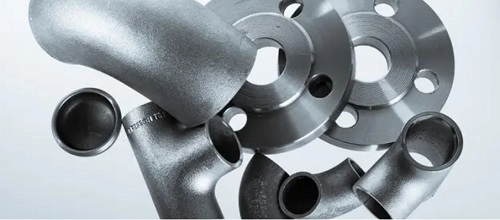1. What are seamless pipe fittings?
Seamless pipe fittings refer to pipe components made of seamless pipes. Seamless steel tubes are round, square, and rectangular steel materials with hollow sections and no seams around them. Compared with welded pipes, it is made of steel ingots or solid tube blanks that are perforated into capillary tubes, and then hot-rolled, cold-rolled or cold-drawn.Pipe fittings are various components used to connect, support, and control the flow of fluids through piping systems. They are usually made of metal, plastic or other materials and come in different shapes, sizes and functions. Pipe fittings are widely used in various industrial and civil fields, such as water supply, drainage, gas transmission, petrochemical industry, electric power, etc.
2. Function of seamless pipe fittings
The main roles of seamless pipe fittings include:(1)Connect
Pipe fittings connect various parts of a piping system together to form a complete and reliable fluid transfer channel. For example, joints such as elbows, tees, and crosses can connect straight pipes into pipes with different angles and directions; connectors such as flanges and ferrules can connect pipes with equipment such as valves and pumps.An elbow is a pipe connection often used to change the direction of a pipe. It consists of a curved section of pipe that allows the fluid to change the direction of flow within the pipe.A tee is a pipe fitting used to connect and divert three pipes to change the direction of fluid. A tee is usually T-shaped or Y-shaped, with one inlet and two outlets, or two inlets and one outlet.Flange is a part used to connect shafts to shafts, pipe ends to pipe ends, or equipment to equipment.

(2)Support
Pipe fittings can provide support and fixation to the pipeline system and prevent pipelines from being displaced or deformed due to gravity, external force or vibration. For example, supports such as brackets and hangers can bear the weight and pressure of the pipeline; compensators such as expansion joints and bellows can absorb the thermal expansion and contraction of the pipeline due to temperature changes.(3)Control
Pipe fittings can control the flow direction, flow rate, pressure and other parameters of fluid in the pipeline system. For example, valves can cut off or regulate the flow of fluids; flowmeters can measure the flow of fluids; pressure reducing valves, safety valves, etc. can control the pressure of fluids.(4)Sealing
Pipe fittings can ensure the sealing performance of the pipeline system and prevent fluid leakage or external impurities from entering. For example, seals such as gaskets and rubber rings can fill the gaps in pipeline interfaces to form an effective seal; valve seats, valve discs and other components can fit tightly to prevent fluid leakage.(5)Protection
Pipe fittings protect piping systems from the outside environment and extend the service life of pipes. For example, the insulation layer can prevent the fluid in the pipeline from freezing or evaporating due to temperature fluctuations; the anti-corrosion layer can prevent the pipeline from being eroded by corrosive media.(6)Monitoring
Pipe fittings can realize real-time monitoring and alarm of the operating status of the pipeline system. For example, sensors can detect parameters such as pressure, temperature, and flow in pipelines; alarms can sound alarms when parameters are abnormal, reminding operators to handle them in a timely manner.
Previous:Black structural pipe









